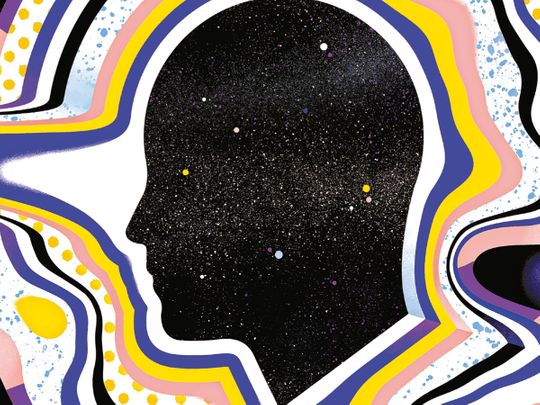
The map of the territory
The century of the Enlightenment, rational and progressive, strove methodically to cleanse the world of its beliefs, wearing out the sense of wonder surrounding natural phenomena. A scientific shift like what poet William Blake had described. To once again be filled with wonder, this is the enchantment of erudition, in seven chapters, that English science writer Caspar Henderson tackles in A New Map of Wonders.
1. Life
In the beginning, the components remain astonishingly restricted: water, proteins, carbohydrates, lipids, and nucleic acids. At the atomic level, all of these are found in the infinite combination of three elements: oxygen, carbon and hydrogen. As astronomer Carl Sagan said, if you wish to make an apple pie from scratch, you must first invent the universe! It is a process of discoveries connecting the laws of physics, taxonomy, and evolution of matter. This fascinating story demonstrates how all life shares the same chemical makeup, going back to the last universal common ancestor or LUCA, which was already in existence 3.8 billion years earlier. A genetic signature in common and shared by all.
2. Human brain
With its configuration like something from Escher or Piranesi, the brain still holds many mysteries. If we imagine it in terms of a forest, the number of neurons it has is four times higher than all the trees in the Amazon. Our 86 billion neurons almost equal the number of stars in the Milky Way. Translated into forest area, our neurons would cover approximately 1.2 million km2, or 14 times the size of United Arab Emirates. Plants – life in general – emit neurotransmitters, which make them capable of both remembering and feeling. We are only the latest point in evolution in a highly sensitive universe.
3. Heart
Leonardo da Vinci established the similarities between the vortices of blood circulation between the aorta and valves of the heart, and the flow of river water. For Newton, Nature was 'a body in perpetual movement', which a contemporary reframed by isolating the movement of the winds on the earth’s surface. These winds led to the marine currents that bore great discoveries and opened the trade routes between continents. These convolutions were revealed by NASA satellite images several centuries later.
4. Self
Ecstasy is shared by babies and shamans. Researchers have shown that psilocybin generates feelings of confusion, dissolution of the self, and pleasure that are familiar to newborns, before consciousness forms memories and marks out the border between our body and the world around us. Spirituality and music momentarily allow us to find ecstasy once more. By observing the multiplication of connections in a brain under the effect of psychotropic substance, neuroscientists have highlighted the similarities of these states. Perhaps it's another way for adults to become better children!
5. Consciousness
We receive all stimuli in the form of electrical impulses, to be transformed into a chain of sensations: sun on skin, the smell of a wood fire, sudden twinges of thought. The 'complex problem' of consciousness that has been troubling philosophers since antiquity. It has entered the scientific field, which faces the same inability to locate and isolate its way of working. Within the brain seethes a mass of information, leaving behind the unconscious processes in control of the body’s functioning to retain the most relevant. For instance, when, in the middle of a noisy crowd, we become aware that our name has been distinctly pronounced. Many scientists doubt that the brain is where the conscience abides. In the panpsychism maintained since Spinoza, matter is replaced by God. Could it be that a field of consciousness is activated by critical states of matter?
6. Light
From the moment natural philosophies, as we once called the sciences, began their ascent, the visible domain ensured its total domination. After having explored the universe in all its infinite minuteness and immensity, our confusion remains intact: Are snakes or insects not able to see electromagnetic waves that are still beyond our powers of perception? How would we see the world measured against the yardstick of ultraviolet and infrared light? In 1800, William Herschel discovered the existence of invisible light, or 60 per cent of the photons that arrive on Earth. Neutrinos, induced prior to being scientifically established in 1930, are the elementary particles that pass through us each second in the trillions, treating us like simple ghosts. The first to be observed came from the explosion of supernovas during the Enlightenment. Elusive, and versatile, neutrinos raise intractable problems related to one of the major enigmas surrounding matter. Mystery is the first requirement for the enchantment of the world!
7. World
Our mental mapping of the world appears limited when compared to salmon, who are able to identify molecules from their natal streams up to a distance of hundreds of kilometres. Monarch butterflies leave Mexico to join the ranges of the Rocky Mountains by using the position of the sun. Our understanding of the world depends on our ability to map it out. In antiquity, Anaximander envisaged a universe without limits, something which explorers confirmed a few centuries later. Virtual reality opens a world of incredible representations. It further pushes the limits of exploration at the heart of a finite world, where even the most remote regions have been explored. What remains is the intergalactic worlds of SpaceX. But, above all, this limitless imagination, prodded by the curiosity which this famous book celebrates with continual impertinence.
A NEW MAP OF WONDERS by Caspar Henderson. Granta Books


